Mdina, Malta's silent city
Mdina is a fortified medieval town enclosed in bastions, located on a large hill in the centre of Malta. The town was the old capital of Malta, and with its narrow streets, few inhabitants and beatuful views over the Island it is truly a magical town. Mdina is referred to as the “Silent City” by Maltese and visitors alike - no cars (except those of a limited number of residents) have permission to enter Mdina and the town provides a relaxing atmosphere among the visitors walking its narrow streets and alleyways.
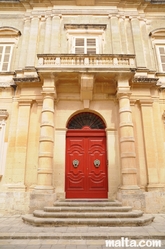 Mdina has a small population of around 250 people who live at 0.9km2, within the city walls. In contrast, outside the city walls, the village of Rabat is just a step away, and has a population of over 11,000 people. The medieval town of Mdina presents a mix of Norman and Baroque architecture and is the home to many palaces, most of which today serve as private homes. The large and striking Cathedral of the Conversion of St. Paul stands in the main square of the town.
Mdina has a small population of around 250 people who live at 0.9km2, within the city walls. In contrast, outside the city walls, the village of Rabat is just a step away, and has a population of over 11,000 people. The medieval town of Mdina presents a mix of Norman and Baroque architecture and is the home to many palaces, most of which today serve as private homes. The large and striking Cathedral of the Conversion of St. Paul stands in the main square of the town.
Mdina was first inhabited and fortified around 700 BC by the Phoenicians and was at that time called Maleth. Mdina benefits from its good location on the island’s highest point, far away from the sea. Under the Roman Empire the Roman governor built his palace in Mdina and it is said that even St. Paul stayed there after he was shipwrecked in Malta.
It was the Normans who surrounded the city with its thick defensive fortifications and they also widened the moat around Mdina. After an earthquake in 1693, there was the need to redesign parts of the city. This introduced Baroque designs within the city, and the Knights of Malta rebuilt the cathedral as well as the Magisterial Palace and Palazzo Falzon.
The gate that stands at the entrance today is not the original entrance; the bridge was built later on to enable cars and people to enter Mdina. The original entrance gate stands approximately 100 meters to the left.
Mdina: things to do and see
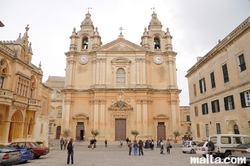 Natural History Museum: The Museum has an impressive collection with the reference collection holding over 10,000 rocks and minerals, over 3,500 birds, birds’ eggs and nests, 200 mammals, over 200 fish species, thousands of local and exotic shells and insects.
Natural History Museum: The Museum has an impressive collection with the reference collection holding over 10,000 rocks and minerals, over 3,500 birds, birds’ eggs and nests, 200 mammals, over 200 fish species, thousands of local and exotic shells and insects.
Carmelite Church and Priory: This 17th century building offers visitors an opportunity to visit the spiritual way of life of the friars. The church and priory both have impressive works of art and are accompanied by a museum, gift shop and a cafeteria.
Palazzo Falzon: A well preserved medieval building which dates back to 1495. It holds an incredible collection of antiques.
St. Paul’s Cathedral: This majestic Cathedral is located in the heart of Mdina, on the site where St. Paul converted Publius to Christianity. It is an artistic gem from the 17th century.
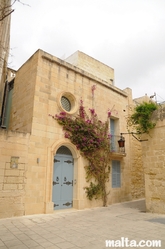
Cathedral Museum: Originally a seminary, the museum today is one of the most outstanding religious museums of Europe. It exhibits an impressive collection of sacred art, famous paintings, coin collections, Roman antiquities and original documents from the time of the Inquisition and the early Università. There is also a wonderful series of woodcarvings by Albrecht Durer, and much more.
Palazzo Santa Sophia: The basement of this house is assumed to be the oldest in siculo-norman style and dates back to 1233. The first floor, however, was added not earlier than 1938. All buildings that were erected between 1100 and 1530 are generally classified as "siculo-norman".
Torre dello Stendardo: This tower was constructed as a watchtower in 1750. On its roof a signal fire was set alight to warn the population in case of enemy attacks. It is now a police station.
Chapel of St. Agatha: This church was originally built in 1417, and redesigned by Lorenzo Gafà, in 1694. The church is dedicated to St. Agatha who, it is said, found shelter on Malta from the persecution of the Roman Emperor Decius (249 AD). Besides St Paul and St Publius, St Agatha is one of the three patron saints of Mdina.
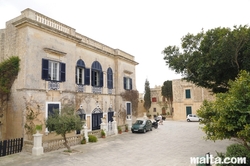 Banca Giuratale: After Grandmaster Vilhena had confiscated the original Ministerial Palace for his own use, the Università found its new seat in this building. During the revolt against the French, a national assembly came together here. It elected a committee to consult with Lord Nelson, to get his assistance against the French. The Palazzo Giuratale became their headquarters.
Banca Giuratale: After Grandmaster Vilhena had confiscated the original Ministerial Palace for his own use, the Università found its new seat in this building. During the revolt against the French, a national assembly came together here. It elected a committee to consult with Lord Nelson, to get his assistance against the French. The Palazzo Giuratale became their headquarters.
Mdina Dungeons: The entrance is located inside the main entrance gate to Mdina, at the first turning on the right. Here, in the series of secret underground passageways, chambers and cells, a number of mysterious events from the dark side of Maltese history have been recreated.
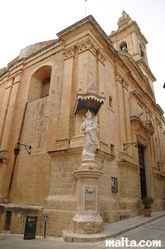 Nunnery of St Benedict: The Benedictine nuns in Mdina are first mentioned in 1450. The present building is based on a medieval hospital for women. It was enlarged and totally restored in 1625.The rules of this Order are extremely strict, and the nuns are never allowed to leave the building, not even after their death. Every nun is buried in the crypt, and the only men allowed in are the doctor and the decorator. Today, about 20 nuns live there in total isolation, devoting their days to prayer and the maintenance of the garden.
Nunnery of St Benedict: The Benedictine nuns in Mdina are first mentioned in 1450. The present building is based on a medieval hospital for women. It was enlarged and totally restored in 1625.The rules of this Order are extremely strict, and the nuns are never allowed to leave the building, not even after their death. Every nun is buried in the crypt, and the only men allowed in are the doctor and the decorator. Today, about 20 nuns live there in total isolation, devoting their days to prayer and the maintenance of the garden.
Mdina Experience: This attraction provides a perfect start to a day in Mdina. Take a journey through time and re-live the tragedies and triumphs brought to life before you in an audio-visual spectacular documentary that brings 3000 years of history alive. The Mdina Experience is found in a medieval building that is a museum in itself.
Visit Mdina after dark: Take a walk around the old Capital City of Mdina. Get to know the facts about important buildings, hear some fascinating tales and historical gossip. Mdina is the pivot of Malta's 7000 year history, and Prehistoric remains in the area can vouch for this. Go around the narrow, winding roads of medieval Mdina, while appreciating the baroque buildings the Knights have left us. Amazing views from the Belvedere shows off the beauty of Malta by night.
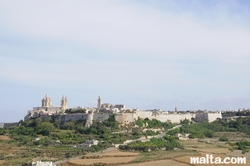
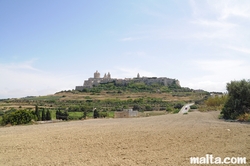


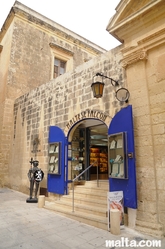
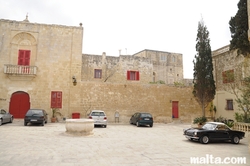
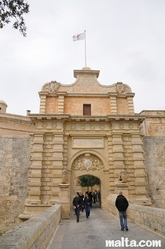
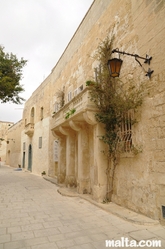
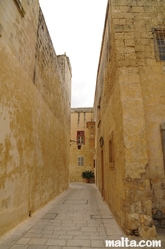

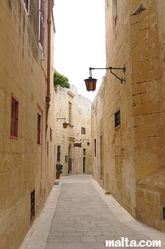
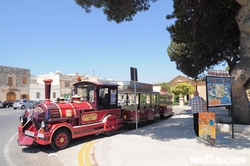


 Mdina has a small population of around 250 people who live at 0.9km2, within the city walls. In contrast, outside the city walls, the village of Rabat is just a step away, and has a population of over 11,000 people. The medieval town of Mdina presents a mix of Norman and Baroque architecture and is the home to many palaces, most of which today serve as private homes. The large and striking Cathedral of the Conversion of St. Paul stands in the main square of the town.
Mdina has a small population of around 250 people who live at 0.9km2, within the city walls. In contrast, outside the city walls, the village of Rabat is just a step away, and has a population of over 11,000 people. The medieval town of Mdina presents a mix of Norman and Baroque architecture and is the home to many palaces, most of which today serve as private homes. The large and striking Cathedral of the Conversion of St. Paul stands in the main square of the town. Natural History Museum:
Natural History Museum:
 Nunnery of St Benedict:
Nunnery of St Benedict:
Post your comment
Please login or register in order to write a comment
Comments of Members